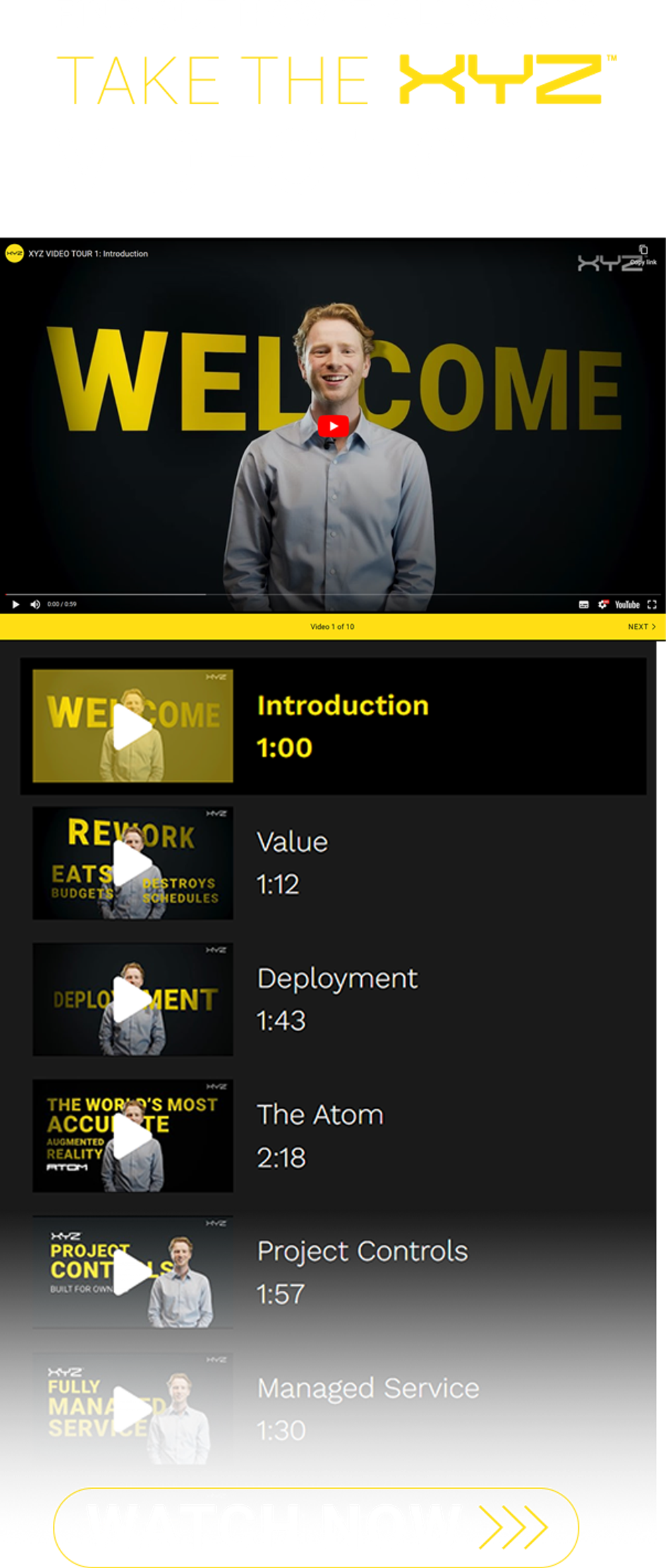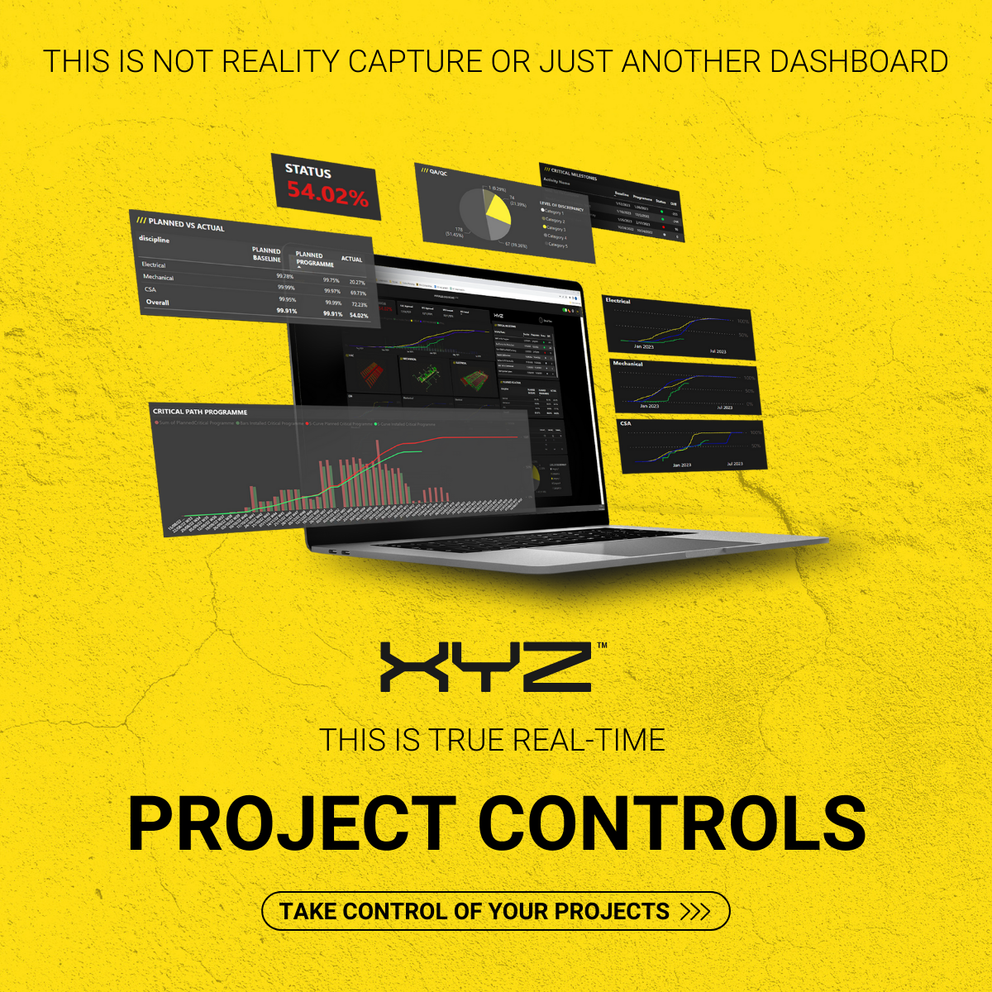-
Services
Services
Find out how we work with our clients and deliver value to construction projects from day one
-
Solutions
Solutions
Discover how all our solutions sync together to deliver construction's most powerful BIM platform to date
-
Built for
Built for
-
Industry
Industry
Understand how we support construction's biggest sectors, and hear from our clients who have experienced the power of XYZ
-
Resources
Resources
Get stuck into all our latest thought leadership, news, reports and industry leading content
-
Company
Company
Dive into what makes XYZ tick, unearth why construction is in our DNA and why we are world leaders in AR solutions

Insights
Three Takeaways from DCD Connect London

17 October 2023
Data centers are in high demand around the globe, so I’m often on planes getting my passport stamped in places ranging from the United States, Scandinavia, the Far East, and the Middle East. I enjoy the conversations and work that come from supporting the construction of mission critical projects across the world, but it’s nice to be home for a bit as well, which was just one of the reasons I was excited to attend DCD Connect London last week.
When XYZ was founded in 2017 the demand for mission critical projects was high and the complexity of these structures was steadily increasing. It’s only been 6 years since then and it’s clear that a significant amount of progress has been made in mission critical construction, but at the same time our technological evolution has created an unprecedented amount of demand for data centers.
These are three takeaways I had after listening, learning, and networking at DCD Connect London.
The Artificial Intelligence (AI) push is real
Business and technology news is dominated by headlines about artificial intelligence, and the construction industry – with a focus on mission critical projects – should prepare for similar AI headlines to appear in our business and trade publications as well. Research released by Dell’Oro Group predicts that investments in AI infrastructure projects will “raise data center capital expenditures to over $500 billion by 2027.”
As the tech world shifts its focus towards AI, the demand for data centers to support this effort will skyrocket (mild shock).
Data centers are already complex projects to build, and the computing power needed to support AI initiatives requires even more complex facilities and infrastructure. At XYZ we often ask, “What if we could build a complex project right, the first time, without any errors? What if we could help provide project certainty?” That’s what I think the focus should be as we approach the oncoming rush of mission critical projects. And XYZ is excited to be partnering with the leading data center developers and technology companies that are taking on the task of ensuring we have enough infrastructure to meet the demand.
We need more skilled labor to meet demand
Meeting demands is a thread connecting most discussions around mission critical construction, and it extends to the ability to source enough skilled labor to complete the jobs that are currently in the backlog. The optimist will look at this as a good problem to have. We have so much work to complete that there aren’t enough people on staff or currently employed to complete it all. However, for all of us in the construction industry we know all too well that attracting talent is terribly difficult.
Technology is not a silver bullet for all labor shortage issues, but we do see a way for certain technologies, like augmented reality (AR), to help increase productivity during construction such that project teams can reallocate human capital resources to take on work across more projects. For example, mission critical projects might need to utilize half the amount of planners on one project by implementing the XYZ Platform as certain manual reporting tasks are automated in that phase of the project, making those additional people available to start work on other projects.
Site locations for data centers are expanding
Six years ago I would consider a large data center project somewhere in the 30/40 megawatt range. Today, I’m seeing more large projects come online in the 300 megawatt range! Data centers started out in city centers, but this new demand for power and size is leading to construction projects in more diverse and remote areas.
As I just noted, the ability to get enough people to complete a project is already a difficult task and now we’re needing those same people to be available in more remote places. In addition to human capital resources, our industry is also tackling supply chain issues when it comes to 1) forecasting and procuring enough material with enough lead time to complete projects on schedule, and 2) getting the materials delivered to remote mission critical jobsites.
The construction industry has adapted to demand and increased complexity of projects for centuries. To date, the largest developers of mission critical projects have implemented XYZ Reality on projects totalling over $10 billion.
With the adoption we are seeing of AR technology among construction teams and asset owners of large, complex projects, I’m excited to be part of the group of individuals who are embracing these challenges.
Ready to experience the future of mission-critical construction? Request a live demo of the XYZ Reality Platform today and witness the power of AR technology in action. See how we're reshaping the industry one project at a time.







